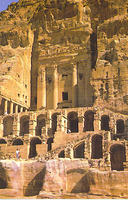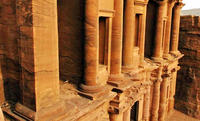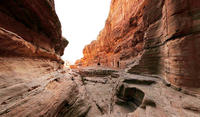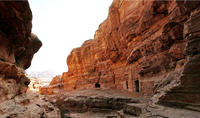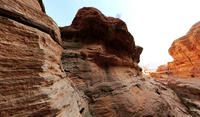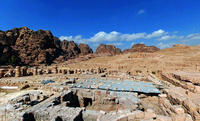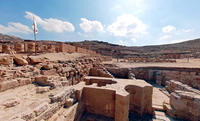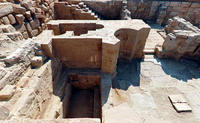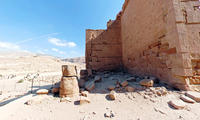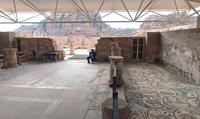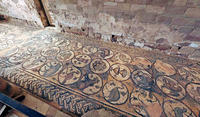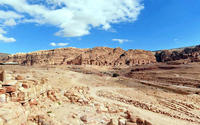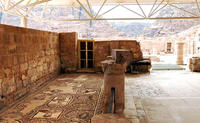You are in: Middle East -> Jordan -> Petra, and traditional search or Image Gallery will yield results of this site only
Petra
| Site number: | 326 |
|
| Type of site: | Cultural | |
| Date: | Prehistoric | |
| Date of Inscription: | 1985 | |
| Location: | Middle East, Jordan, Ma’an Governorate | |
Up to 75 images are shown here. Click on each for more details or on Image Gallery for more images.
Six official UN languages:
Arabic,
Chinese,
English,
French,
Russian,
Spanish
Other languages: Bosnian, Bulgarian, Catalan, Croatian, Czech, Dutch, Esperanto, Farsi, Finnish, German, Indonesian, Italian, Japanese, Kurdish, Norwegian-bokmål, Polish, Portuguese, Swedish, Turkish, Vietnamese
Other languages: Bosnian, Bulgarian, Catalan, Croatian, Czech, Dutch, Esperanto, Farsi, Finnish, German, Indonesian, Italian, Japanese, Kurdish, Norwegian-bokmål, Polish, Portuguese, Swedish, Turkish, Vietnamese
| Description: | Positioned inbetween the Red Sea and the Dead Sea this Nabataean caravan-city, inhabited since prehistoric times, was a significant crossroad between Arabia, Egypt and Syria-Phoenicia. Surrounded by mountains, Petra is half-built, half-carved into the rock, and hence is pierced with passages and gorges. A place where ancient Eastern traditions merge with Hellenistic architecture, it is one of the world's most celebrated archaeological sites. --WHMNet paraphrase from the description at WHC Site, where additional information is available. For 360 degree imaging of this site, click here. | |
| Petra (from πέτρα "petra", rock in Greek; Arabic: البتراء, Al-Butrā) is an archaeological site in southwestern Jordan, lying on the slope of Mount Hor in a basin among the mountains which form the eastern flank of Arabah (Wadi Araba), the large valley running from the Dead Sea to the Gulf of Aqaba. It is famous for having many stone structures carved into the rock. The long-hidden site was revealed to the Western world by the Swiss explorer Johann Ludwig Burckhardt in 1812. It was famously described as "a rose-red city half as old as time" in a Newdigate prize-winning sonnet by John William Burgon. Burgon had not actually visited Petra, which remained accessible only to Europeans accompanied by local guides with armed escorts until after World War I. The site was designated as a UNESCO World Heritage Site in 1985 when it was described as "one of the most precious cultural properties of man's cultural heritage." --Wikipedia. Text is available under the Creative Commons Attribution-ShareAlike License. For 360 degree imaging of this site, click here. | ||
| Source: | http://whc.unesco.org/en/list/326 | |
| Source2: | http://whc.unesco.org/en/list/326/video | |
| Reference: | 1. UNESCO World Heritage Center, Site Page. | |



